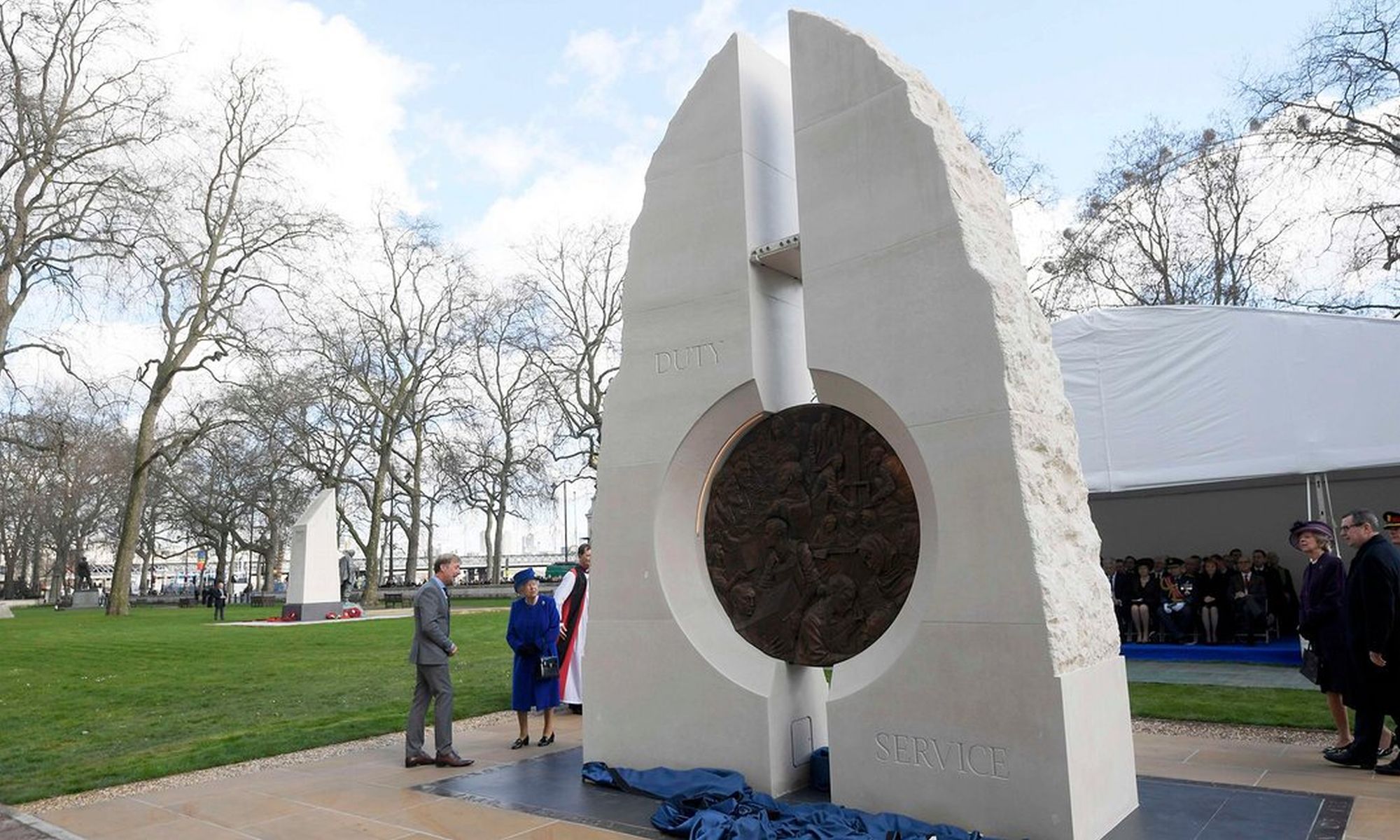Iraq, Afghanistan, Gulf War Memorial
 Paye Stonework and Restoration, the contractors for the memorial to the dead in the Iraq, Afghanistan and Gulf conflicts chose stoneCIRCLE to produce the monument. The mammoth structure was designed by Paul Day, a well-known sculptor who also produced the monument for the Battle of Britain. It commemorates both military and civilian deaths in the regions. It was unveiled by Her Majesty The Queen on 9th March and is situated in Victoria Embankment Gardens near the MoD building.
Paye Stonework and Restoration, the contractors for the memorial to the dead in the Iraq, Afghanistan and Gulf conflicts chose stoneCIRCLE to produce the monument. The mammoth structure was designed by Paul Day, a well-known sculptor who also produced the monument for the Battle of Britain. It commemorates both military and civilian deaths in the regions. It was unveiled by Her Majesty The Queen on 9th March and is situated in Victoria Embankment Gardens near the MoD building.
The monument was produced in Jordans Basebed Portland Stone and is composed of 10 blocks, the largest of which weighed 7000kg each. In fact they were so heavy that stoneCIRCLE's lifting equipment could not cope with them and the company had to buy in a 15 tonne crane to help with the job.
The front and back of the blocks are smooth with carved lettering, whereas the sides were left rough to represent the rugged terrain in the regions and also the continuing struggle in the areas and divided public opinion about the campaigns.
The production process meant that once the blocks were rough cut, the monument was dry built in the yard around a stainless steel frame, so the edges could be pitched by hand to match the artist's requirements.
Once finished it was dismantled and collected for delivery to the site where Paye Stonework and Restoration re-erected it.
[edit] Related articles on Designing Buildings Wiki
- Caring for war memorials.
- Types of stone.
- Modern stonemasonry.
- Lincoln Memorial.
- Monument and context.
- Scheduled monuments.
- Spomeniks.
- UK's National Holocaust Memorial.
- Bookmatched Marble for Boutique Hotel.
- Julian Opie Art Wall CitizenM Tower of London Hotel.
- Julian Opie Limestone & Bronze Frieze for Bermuda Hotel.
- Memorials and public parks.
- The Commonwealth War Graves Commission.
- Two New Ludgate Portland Stone Feature Wall
- Portland Stone.
- Use of Stone in Monks Lantern Weybridge.
- War memorials.
Featured articles and news
RTPI leader to become new CIOB Chief Executive Officer
Dr Victoria Hills MRTPI, FICE to take over after Caroline Gumble’s departure.
Social and affordable housing, a long term plan for delivery
The “Delivering a Decade of Renewal for Social and Affordable Housing” strategy sets out future path.
A change to adoptive architecture
Effects of global weather warming on architectural detailing, material choice and human interaction.
The proposed publicly owned and backed subsidiary of Homes England, to facilitate new homes.
How big is the problem and what can we do to mitigate the effects?
Overheating guidance and tools for building designers
A number of cool guides to help with the heat.
The UK's Modern Industrial Strategy: A 10 year plan
Previous consultation criticism, current key elements and general support with some persisting reservations.
Building Safety Regulator reforms
New roles, new staff and a new fast track service pave the way for a single construction regulator.
Architectural Technologist CPDs and Communications
CIAT CPD… and how you can do it!
Cooling centres and cool spaces
Managing extreme heat in cities by directing the public to places for heat stress relief and water sources.
Winter gardens: A brief history and warm variations
Extending the season with glass in different forms and terms.
Restoring Great Yarmouth's Winter Gardens
Transforming one of the least sustainable constructions imaginable.
Construction Skills Mission Board launch sector drive
Newly formed government and industry collaboration set strategy for recruiting an additional 100,000 construction workers a year.
New Architects Code comes into effect in September 2025
ARB Architects Code of Conduct and Practice available with ongoing consultation regarding guidance.
Welsh Skills Body (Medr) launches ambitious plan
The new skills body brings together funding and regulation of tertiary education and research for the devolved nation.
Paul Gandy FCIOB announced as next CIOB President
Former Tilbury Douglas CEO takes helm.
UK Infrastructure: A 10 Year Strategy. In brief with reactions
With the National Infrastructure and Service Transformation Authority (NISTA).






















